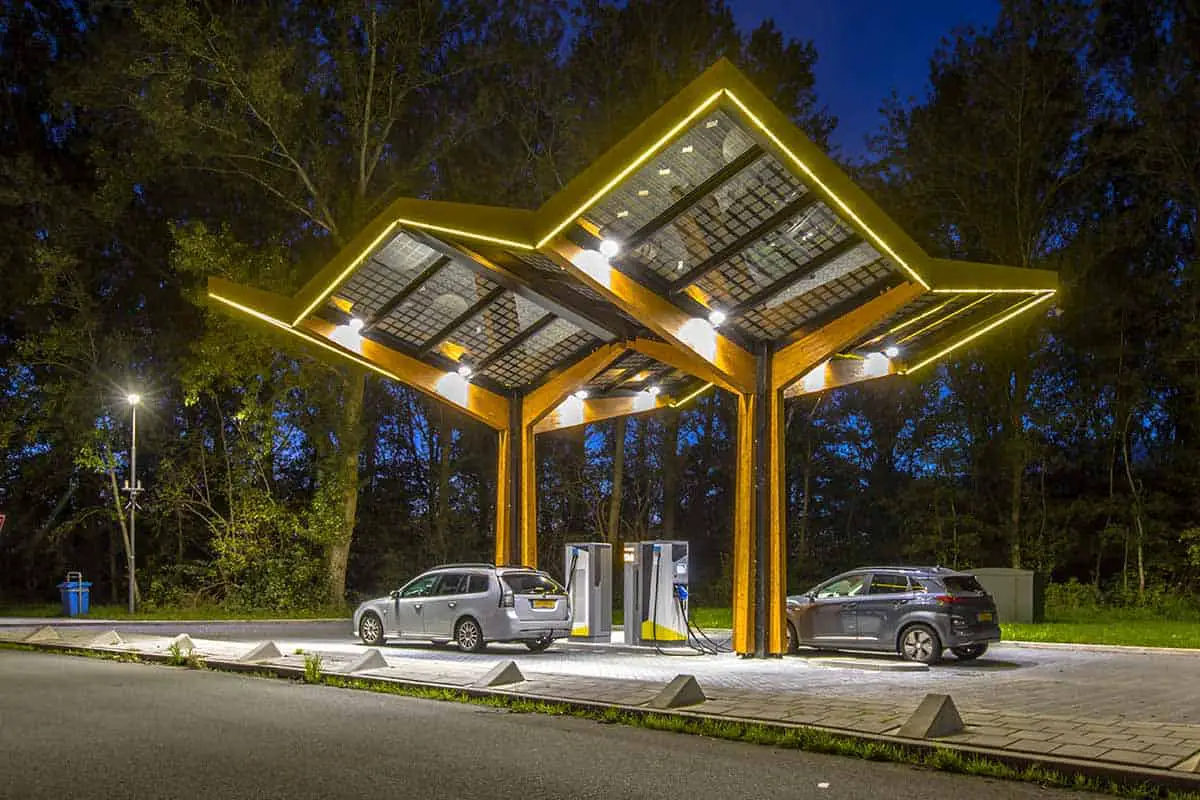The growing demand for sustainable energy solutions has propelled Zero Emission Vehicles (ZEVs) into the spotlight as a crucial step towards a greener global economy.
However, widespread adoption of these electric vehicles is challenged by several key factors, which need to be thoroughly understood and addressed to accelerate this transition.
In this comprehensive review of literature and forecasting analysis, we dive deep into the world of ZEV adoption, discussing affordability, infrastructure availability, government regulations, consumer awareness initiatives, and much more.
Key Takeaways
- Affordability and cost are significant factors influencing ZEV adoption, but reducing operating costs over time through charging an EV is a crucial consideration.
- Range limitations and inadequate charging infrastructure need to be addressed simultaneously for mass adoption of ZEVs.
- Government regulations and incentives play a crucial role in accelerating global ZEV adoption rates while consumer awareness and education can help dispel myths surrounding EV ownership.
- Based on modeling techniques, the growth of sustainable energy options such as electric vehicles has a promising outlook, but policymakers must work together to incentivize EV development.

Key Factors That Influence ZEV Adoption
Factors such as affordability and cost, range and charging infrastructure, government regulations and incentives, and consumer awareness and education significantly influence ZEV adoption.
Affordability And Cost
One of the most significant factors affecting ZEV adoption is affordability and cost. As electric vehicles (EVs) become more accessible, people are gradually making the switch from conventional Internal Combustion Engine (ICE) vehicles to EVs.
For a long time, the high initial investment needed for EV ownership was considered a deterrent; however, this trend is changing with improved battery technology and increased economies of scale in manufacturing.
Nonetheless, it’s crucial not only to consider the upfront cost but also total ownership expenses when evaluating an electric vehicle’s affordability. Charging an EV is generally less expensive than filling up a gasoline-fueled car because electricity rates are typically lower than gas prices – contributing to reduced operating costs over time.
Moreover, advancements in battery technology have led to improved efficiency and longer ranges for electric cars – positively influencing consumer perception on their value proposition despite higher initial investments compared to ICE vehicles.
Range And Charging Infrastructure
The growth of the ZEV (zero-emission vehicle) market is heavily reliant on the availability and accessibility of charging infrastructure. Presently, one major challenge that many potential electric vehicle users face is the limited range offered by some models compared to traditional internal combustion engine (ICE) vehicles.
As battery technology continues to advance, we’re seeing more affordable electric cars with increased ranges being introduced in the market.
Charging infrastructure plays a critical role in alleviating “range anxiety” – a common concern among potential EV adopters who fear running out of power before reaching their destination or finding a nearby charging station.
Governments and private companies around the world have acknowledged this issue and are investing significantly into expanding public charging networks as well as developing fast-charging technologies that can recharge an EV in just minutes instead of hours – much like filling up at gas stations today.
Ultimately, driving mass adoption of ZEVs requires concerted efforts from automakers, governments, industry stakeholders, and consumers alike to address both range limitations and inadequate charging infrastructure issues simultaneously.
Government Regulations And Incentives
Government regulations and incentives play a crucial role in accelerating ZEV adoption worldwide. For instance, the European Union has been proactive in implementing policies that support the growth of environmentally friendly vehicles like electric cars.
An excellent example of government incentives catalyzing ZEV adoption is toll discounts offered to electric vehicle drivers. By providing monetary benefits to EV owners, policymakers aim to increase demand for clean transportation options not only among early adopters but also within the wider population.
Additionally, research results suggest that influential factors prompting consumers’ decisions towards EVs include government-backed incentives along with EV characteristics and customer traits.
Consumer Awareness And Education
Consumer awareness and education is a crucial factor in promoting ZEV adoption. With more people being made aware of the environmental benefits of zero-emission vehicles, there has been a gradual shift in perception towards sustainable transport in recent years.
Studies have shown that one of the main reasons why consumers are hesitant to purchase EVs is due to misinformation or lack of knowledge.
In conclusion, by increasing consumer awareness and education on zero-emissions transportation alternatives like electric or fuel cell vehicles – will help accelerate market uptake.

Forecasting ZEV Adoption Rates Through Modeling Techniques
Through advanced modeling techniques, we can predict the future of ZEV adoption rates and gain insights into market trends.
Market Trends And Predictions For Global ZEV (EV) Sales
In this section, we will discuss the current market trends and predictions for global ZEV sales, shedding light on the potential growth of this industry worldwide.
For the purposes of clarity and exactness, the data and projections discussed refer exclusively to battery electric vehicles (BEVs) due to the fact that other types of ZEV still have no significant presence in the auto market (hydrogen fuel cell vehicles). Hybrids and plug-in hybrids are not contemplated because they are not ZEV. Furthermore, only passenger light-duty BEVs have been taken into account, excluding heavy-duty and commercial EVs.
| Year | Global ZEV Sales (Passenger BEVs) | Market Size (USD) |
|---|---|---|
| 2022 | 18.3 million | 193.6 billion |
| 2025 | 56.3 million (Projected) | 312.38 billion (Projected) |
| 2030 | 175.6 million (Projected) | 693.70 billion (Projected) |
As the table above indicates, global passenger EV sales have experienced steady growth in recent years, reaching 18.3 million units and a market share of 4% in 2020.
With increasing consumer awareness, technological advancements, and supportive government initiatives, we can expect to witness significant growth in the coming years. According to various market forecasts, ZEV sales are projected to reach 56.3 million units by 2025, accounting for a market share of 14%.
By 2030, ZEV sales might reach up to 175.6 million units, representing a massive 40% share of total passenger car sales.
These predictions are supported by various forecasts and modeling techniques. However, we must also acknowledge that these projections are dependent on factors such as continued government support and increased public understanding of the benefits of ZEV adoption.
With such promising growth predicted for the ZEV market, it is crucial to continue exploring the key factors that influence ZEV adoption rates to ensure a sustainable future for our environment and global communities.
Conclusion And Future Outlook For ZEV Adoption
In conclusion, the key factors that influence ZEV adoption are affordability, charging infrastructure, government regulations and incentives, and consumer education.
With the use of modeling techniques to forecast future sales of ZEVs globally, we can see a promising future for sustainable energy options.
As the world moves towards a more sustainable economy with increased focus on reducing carbon emissions, it is imperative that policymakers and stakeholders work together to design policies that incentivize EV development.
Overall, there is hope for full-scale EV adoption if all parties involved take action towards creating an environment conducive to EV ownership and usage.
FAQs:
What are ZEVs and why are they gaining popularity?
ZEV stands for Zero-Emission Vehicles, which include electric cars, hydrogen fuel cell vehicles, and various other types of green transportation methods that produce zero emissions. They’re becoming more popular due to increasing environmental concerns and government incentives aimed at reducing carbon emissions.
What factors influence the adoption of ZEVs?
The key factors influencing the adoption of ZEVs include availability, price, range anxiety (concern over running out of battery charge), charging infrastructure availability, perceived reliability and performance compared to traditional gasoline-powered cars.
Are there any drawbacks to owning a ZEV?
Some potential drawbacks of owning a ZEV include higher upfront costs compared to gasoline-powered cars, limited driving range (especially in certain rural areas without adequate charging stations available) as well as specific maintenance requirements that may differ from conventional car models.
How accurate are current forecasting models when predicting future EV adoption rates?
Forecasting models can be useful tools for understanding market trends but should be used with caution given limitations such as unknown external factors or unpredictable changes in consumer behavior patterns..
By taking into account existing research findings alongside real-world case studies however, it is possible get reasonable accuracy levels and predictions regarding EV sales growth.
- Tesla Charger Installation Cost (Home Setups) - March 1, 2024
- Tesla Phone Key Disconnected (Troubleshooting Guide and Quick Fixes) - March 1, 2024
- Tesla FSD 12 (Explained) - March 1, 2024